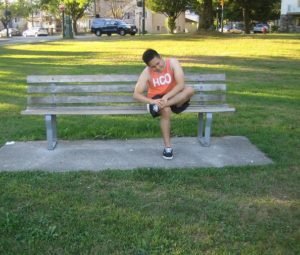Sesamoiditis is an condition that affects the sesamoid bones of the 1st MTP joint which results to inflammation leading to forefoot pain, especially when bearing weight.
The sesamoid bones are 2 small-sized bones embedded in the tendon of the flexor hallucis brevis muscle beneath the base of the big toe. The function of the sesamoid bones is to provide protection to the tendon of the flexor hallucis longus muscle as well as increasing the strength by providing it with a mechanical advantage by serving as a lever and takes on most of the weight bearing on the interior of the foot.
What are the indications?

The indications of sesamoiditis includes:
- Steady onset of forefoot pain, particularly when bearing weight.
- Tenderness over the base of the joint
- Limping or shifting weight onto the exterior of the foot while walking
- Inflammation and swelling
- Pain can be reproduced if the big toe is moved against resistance.
What are the causes?
The sesamoid bones can be damaged in various ways such as:
- Stress fractures
- Sprains
- Traumatic fractures
- Damage between the bipartite sesamoid bone
- Injuries due to movement between the sesamoid bone and the metatarsal bones in the foot
Remember that overpronation is considered as a factor which increases the risk for injury since it causes sideways displacement of the sesamoid bones. This results to wear and tear beneath the 1st metatarsal bone in the foot.
Management
The initial treatment for sesamoiditis involves adequate rest and application of cold to alleviate the pain and inflammation. Anti-inflammatory medications such as ibuprofen might be prescribed as well. Ultrasound therapy might also be used to reduce the inflammation.
The pressure on the sore area over the bones can be relieved by placing padding beneath the foot. A shock absorbing and moderating insole might also be utilized to relieve pressure from the area.
If overpronation is the cause, it must be modified using insoles and altering techniques needed in certain activities and sports. In case the treatment options stated above are not effective, corticosteroid injections might be given.
In case a stress fracture is possible or diagnosed using MRI or a bone scan, it necessitates 6 weeks of non-weight bearing rest under a plastic or plaster cast.
